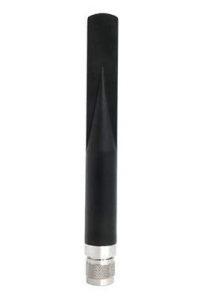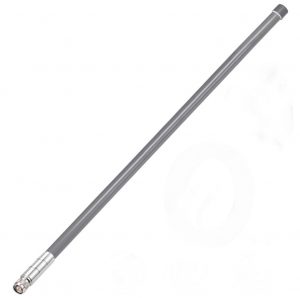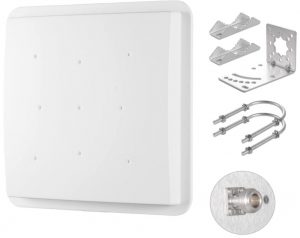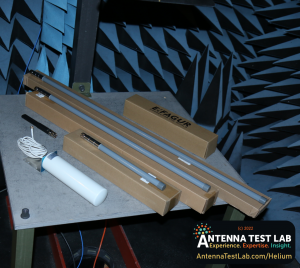- +1 919 200-0292
- info@antennatestlab.com

Helium Network Antenna Reviews
Helium Network Antenna Reviews
We keep getting asked “what is the best Helium miner antenna?”
While we are not in the business of selling or even recommending antennas, we have decades of antenna testing experience, and we are always willing to help customers. So just for fun, we have bought a selection of popular “helium miner” antennas from Amazon and eBay. Then we do what we do best – proper engineering lab testing and documenting objective antenna testing results.
These antennas operate in the unlicensed 902-928 MHz ISM band, and are marketed to consumers and hobbyists. Unfortunately, the marketing tendency is to inflate antenna gain numbers and make unsubstantiated claims – intended to sell in to a retail market where consumers don’t understand antenna specifications or have the means to verify performance. These antennas are made by countless offshore shops, then copied ad nauseam with the same flaws and false claims. Bought by importers at online tradeshows or quasi-wholesale websites like Alibaba. Then private labeled with disposable brands that have no long term reputation to protect. So please keep your expectations low.
In fact, one antenna branded Eifagur had ridiculous claims of 10 dBi omni-directional gain, that we couldn’t resist disproving. So here are some real laboratory results and miner antenna comparisons. Hopefully actual independent laboratory testing will help you chose the best antenna and achieve the best range in your network.
 | Alpha Network AOA-915-5ACM, $25, and specified at 5 dBi. Detailed results here. |
 | Bingfu 3dBi (14 inch), $30. Detailed results here. |
 | Bingfu 5.8dBi (31.5 inch), $39. Detailed results here. |
 | Bobcat (indoor), and specified at 4 dBi. Detailed results here. |
 | Eifagur YCF-6927, $45, and specified at 10 dBi. Detailed results here. |
 | Eifagur 12 dBi outdoor panel antenna, $99, and specified as circularly polarized. Detailed results here. |
All of the “miner” antennas that we have evaluated had significantly less useable gain that advertised. “Real world testing” sounds great, but this over-the-air testing is far too variable to spot specification deviations. Nevertheless, there is still plenty of web content from bloggers and enthusiasts who are “evaluating” antennas.
A few thoughts on the subject of antenna gain. We have this basic article on gain here, and a further explanation of the relationship between gain and directivity. Keep in mind that gain is a function of direction and frequency. This means that an antenna has a fully 3 dimensional gain pattern, and it is different for each frequency. So describing an antenna with a single gain figure can be misleading (sometimes intentionally) – because that gain may be in a useless direction or at an irrelevant frequency. It may even be “fudged up” by 3 or 4 dB for sales-appeal. That’s why commercial customers and design houses pay laboratories like us to do 3D swept frequency patterns on their antennas.
What antenna gain do I need? Where should it be located?
If you are trying to create a terrestrial radio network (that’s what you are doing with your Helium hotspot radio gateway) you need your antenna outdoors and as high as possible. To get the best coverage, locate your antenna up on a pole/mast/tower above your roofline. Roof mounts and masts are helpful here, and investing in better coverage pays you back in income. Omni directional antennas with actual gains from 6 to 8 dBi are great choices, if you give them unencumbered height. Indoor antennas (and their sellers) that promise awesome results are misleading you – that’s like buying magic solar cells that work “great” indoors … but indoors will always be a compromise and severely limit the performance of your miner hotspot (and solar cells). That’s NOT to say that indoor antennas (or solar cells) don’t work – it’s not black and white – they just have far less range and radio coverage that a properly located outdoor antenna (and less income for the same mining hardware investment).
Coax cable can be very lossy, and can quickly kill any benefits of gain/directivity in your roof mounted antenna. The convenient coaxes supplied with many antennas are 0.200 to 0.250 inches in diameter, but are quite lossy. The cable supplied with the Bingfu antennas measured out to 1.7 dB per 10 feet (at 915 MHz). So using a 30 foot run to to the roof would have a substantial 5 dBi loss. A better strategy would be a quality 0.400 inch cable like Times Microwave LMR400, which would be about 1.4 dB loss for the same 30 foot length.
Also, please seal all of your outdoor connections with rubber tape – those connectors are NOT water-proof! Where the coax enters your house, it must be grounded and protected with a lightning arrestor for your equipment’s safety as well as your own.

